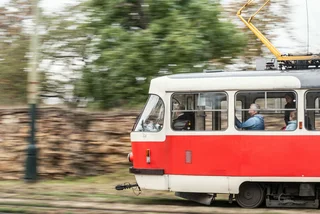The list of significant Czech days could be expanded to include May 27, the date of the assassination of acting Reichsprotektor Reinhard Heydrich in Prague during World War II. The designation, though, falls short of making it a national holiday, and people would not get an additional day off.
Senators on the constitutional law committee have recommended making May 27 the Day of National Defiance (Den národního vzdoru).
The new day would be added to a current proposal that June 26 should become known as the Day of Departure of the Occupying Forces, marking the end of 23 years of Soviet troops in former Czechoslovakia. The amendment is set to be discussed by the Senate in two weeks.
The Chamber of Deputies, the lower house of Czech parliament, is considering a similar proposal. Radek Vondráček (ANO), the current speaker of the Chamber of Deputies, submitted his own amendment shortly before the parliamentary elections. He called for May 27 to be remembered as the Day of the Czechoslovak Resistance's Attack on the Acting Reichsprotektor Reinhard Heydrich.

That amendment is due to be discussed by the government on Monday but has a negative recommendation. In its opinion, the government states that the events of that time are already commemorated on the Day of Remembrance of the Victims of the Extermination of Lidice, which falls on June 10, and on the Day of the Heroes of the Second Resistance, which is June 18.
For the amendment to be discussed by the incoming Chamber of Deputies, resulting from the Oct. 8–9 election, it will have to be resubmitted. The Senate version, though, will still be considered as the Senate did not change.
The Prague 8 Town Hall, on whose territory the assassination took place, is also calling for 27 May to be enacted as a significant day, Prague 8 Mayor Ondřej Gros (ODS) previously told the Czech News Agency (ČTK).
As part of Operation Anthropoid, Czech paratroopers were dropped by Britain’s Royal Air Force on Dec. 28, 1941, with a mission to assassinate Heydrich, the third-highest Nazi official at the time. The assassination was ordered by the Czechoslovak government-in-exile in London. It was a response to the execution of leading members of the military resistance organization Obrana Naroda.
Paratroopers Jozef Gabčík and Jan Kubiš attacked Heydrich on May 27, 1942, as his car made a turn in Prague’s Libeň district. After their submachine gun failed to fire properly, one of the paratroopers threw a grenade that hit the car and sent shrapnel, causing a wound that got infected. Heydrich died of blood poisoning on June 4.

Seven paratroopers, some of whom had different missions, took refuge in the basement of the Church of Sts. Cyril and Methodius in Prague's New Town. They had hoped to be evacuated by the resistance. Instead, they were tracked down by the SS on June 18, and all were killed or committed suicide in the siege at the church.
A memorial plaque for them, erected in 1947, is on the side of the church. Marks left on an outside church wall from the shooting can still be seen. People from the Czech resistance who had helped them were rounded up and executed. The church crypt has been home to the National Memorial to the Heroes of the Heydrich Terror since 1995.
After the death of Heydrich, a state of emergency was declared and thousands of people were arrested. In total, 1,590 were executed. The villages of Lidice and Ležáky were destroyed, and the occupants either were executed or sent to concentration camps. A large memorial including statues of the executed people is in Lidice.
A modern statue in Prague’s Libeň district was erected in 2009 near where the grenade attack took place. The exact street no longer exists. In the same area, two streets are named after the main paratroopers, Jozef Gabčík and Jan Kubiš.
In 2017, the 75th anniversary of the assassination, five plaques for resistance fighters who were executed in the aftermath of the operation were unveiled in the Prague 2 district.
There are also metal markers in the sidewalk corner of Václavská and Resslova streets, unveiled in 2018.
Most recently, a mural depicting the events was painted on a wall in Prague 8. It was unveiled this May just ahead of the anniversary.

The story of Operation Anthropoid was told in the film "Anthropoid," which premiered at the Karlovy Vary International Film Festival in July 2016. Another film about the same story called "The Man with the Iron Heart" was released in 2017. The story of the liquidation of Lidice was told in a film called "Lidice," released in 2011.
An earlier version of the events called "Operation Daybreak" was shot in Prague in English in 1975. The earliest version was "Hangmen Also Die!", shot in Hollywood in 1943 by German-born director Fritz Lang.












 Reading time: 4 minutes
Reading time: 4 minutes 































